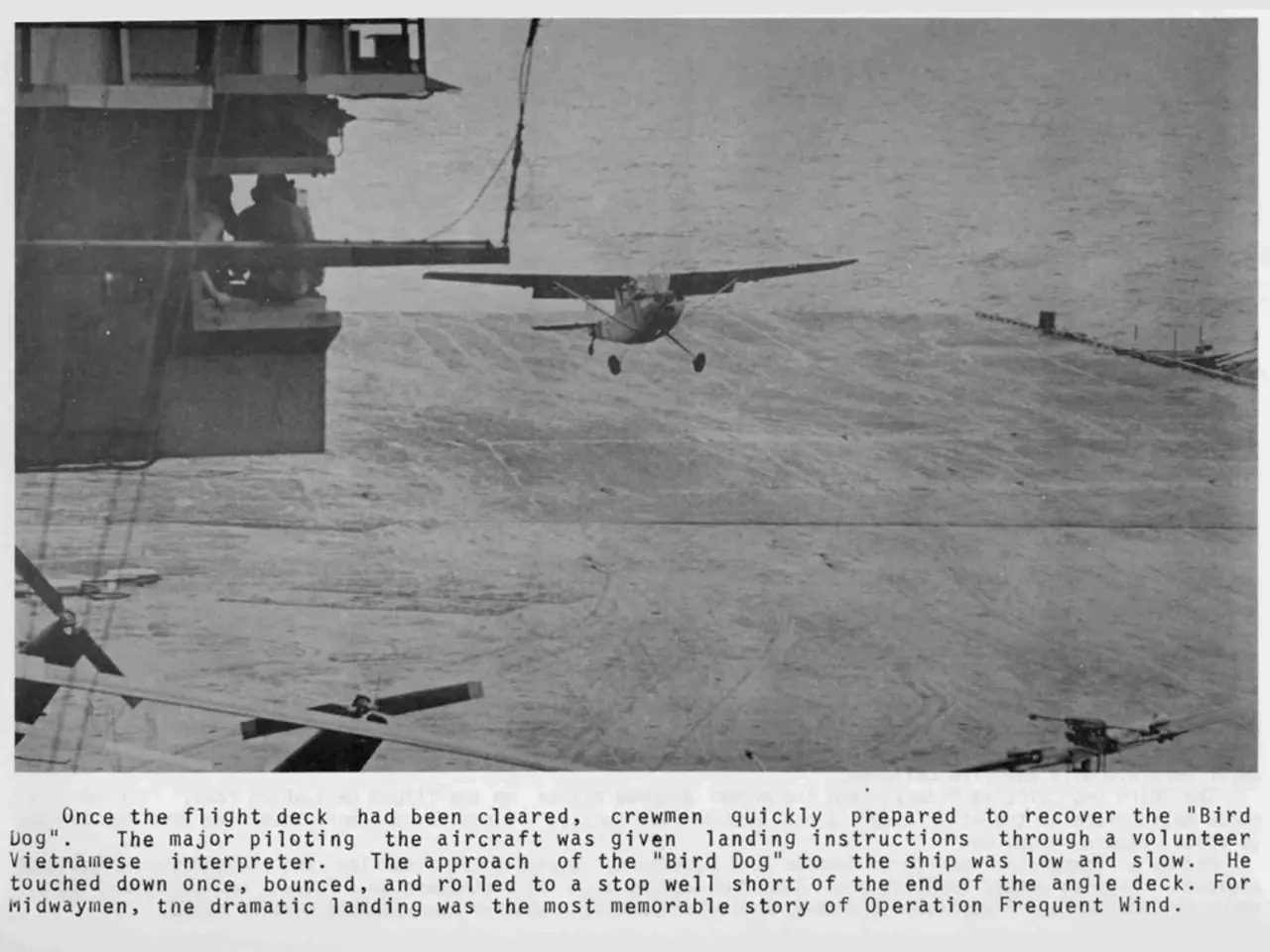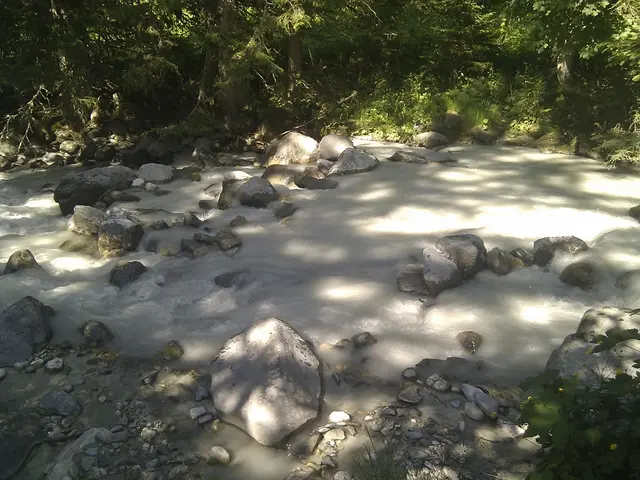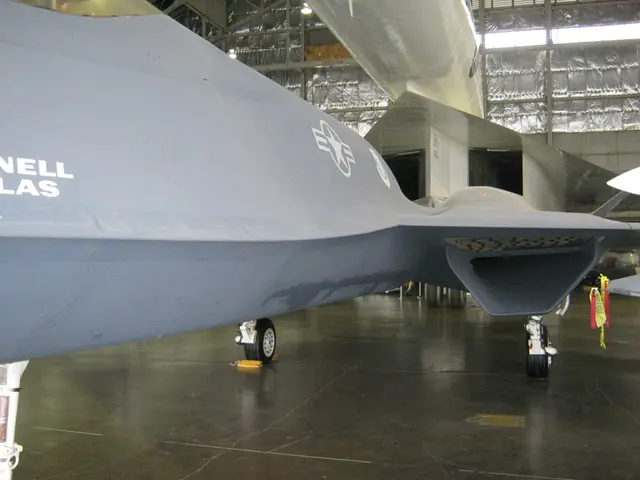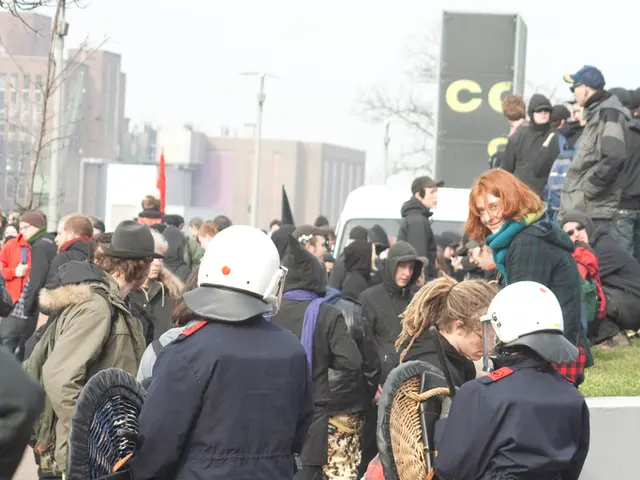Military Operations of B-52 Bombers Begin in Guam, Amplifying Pacific Military Drills
U.S. B-52 Bombers Deployed for Strategic Deterrence in Indo-Pacific
The United States Air Force has deployed B-52 Stratofortress bombers to Andersen Air Force Base on Guam and Diego Garcia in the Indian Ocean as part of its training exercises aimed at reinforcing strategic deterrence in the Indo-Pacific region.
The deployment, which occurred on July 9, is in support of Pacific Air Forces' training efforts and is part of the Bomber Task Force (BTF) missions during the Resolute Force Pacific (REFORPAC) exercise. This exercise, which involves about 300 aircraft and multiple allied nations, is designed to test Air Force readiness for theater-sized conflicts and uphold the rules-based international order.
The B-52s operating from Guam are part of the 23rd Expeditionary Bomb Squadron under the 5th Bomb Wing. Meanwhile, four B-52s are stationed at Diego Garcia in the Indian Ocean since May 2025, replacing the earlier strategy of continuous bomber presence on Guam (which ended in 2020) with rotational task force deployments to maintain unpredictability.
The B-52 deployments are integrated into REFORPAC, a Department-Level Exercise involving multiple Indo-Pacific allies, including Japan, South Korea, Australia, Canada, New Zealand, and the UK. The exercises cover operations across Pacific bases, including Guam, Hawaii, and Japan, and aim to test Air Force readiness for extended combat operations against a peer adversary like China.
The purpose of the deployment is twofold: enhancing strategic deterrence against China by demonstrating U.S. bomber presence and readiness to respond to regional threats, and supporting training with allied and joint forces to prepare for potential conflict scenarios in the Indo-Pacific.
The Pentagon has not disclosed the specific missions for the B-52s during their deployment, but it is likely that they will participate in one of the multiple exercises occurring in the Pacific this summer. At least two B-52 bombers were deployed, according to open-source flight tracking data, with the command stating there were "multiple" B-52s deployed without indicating the exact number.
U.S. bombers, including B-52s, regularly return to Guam, and the B-52s on Guam are supporting regional Joint events. The B-52s on Diego Garcia have been monitoring regional security issues such as insurgent activities, for example, the Houthis in Yemen, since their deployment in May.
The deployment of the B-52s to Guam and Diego Garcia serves as a strategic signal and a practical training effort to maintain U.S. bomber capability, enhance joint and combined operational readiness, and reinforce deterrence in a region increasingly challenged by China's military advancements. The deployment is part of strategic deterrence missions to reinforce the rules-based international order in the Indo-Pacific region.
- The B-52 Stratofortress bombers, a part of the United States Air Force, are housed at the Andersen Air Force Base on Guam and Diego Garcia in the Indian Ocean, contributing to the aerospace industry's strategic deterrence efforts in the Indo-Pacific region.
- The Bomber Task Force (BTF) missions, including those of the B-52s, are integral to the Resolute Force Pacific (REFORPAC) exercise, an engagement that involves numerous aircraft from multiple allied nations within the military's finance-supported Pacific Air Forces.
- The B-52 deployments are integrated into REFORPAC, a Department-Level Exercise, serving as a means to test Air Force readiness for extended combat operations against potential adversaries, primarily China, while simultaneously supporting the aerospace industry's training efforts.
- The Aerospace industry, along with other sectors such as finance and military, will likely collaborate to identify and assess the missions for the B-52 bombers during their deployment in the Indo-Pacific, ensuring the aircraft's contribution to strategic deterrence remains effective.








